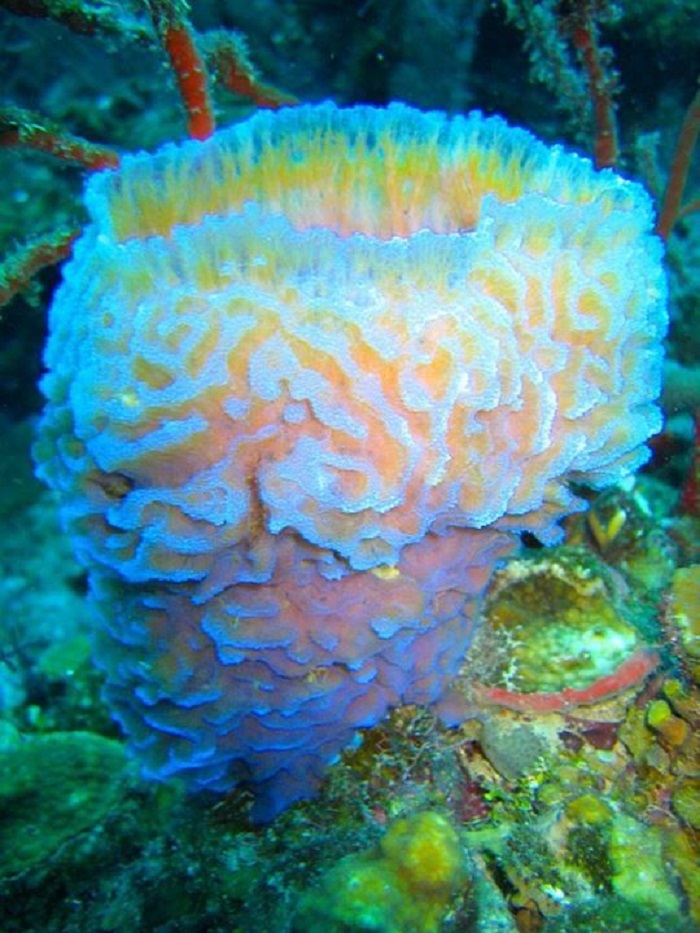Natural sea sponges are among the most intriguing and ancient organisms on our planet. Despite their simple appearance, these remarkable creatures harbor a wealth of fascinating secrets and play vital roles in marine ecosystems. In this article, we will explore the amazing facts and secrets of natural sea sponges, shedding light on their biology, ecological significance, economic value, and ongoing conservation efforts.
A Brief History
The history of sponges in the sea dates back over 600 million years, making them one of the oldest living organisms on Earth. Ancient Greeks were among the first to document their use, primarily for bathing and cleaning. Aristotle, the renowned philosopher and biologist, classified sponges as animals, recognizing their unique nature. Over the centuries, the utilization of sea sponges expanded, leading to a thriving trade in the Mediterranean and beyond.
Biological Marvels
Sea sponges in the ocean belong to the phylum Porifera, a group characterized by their porous bodies and simple structure. They lack true tissues and organs, instead comprising a loose aggregation of cells. Sponges come in various shapes, sizes, and colors, with some species reaching over two meters in diameter.
Structure and Function
The body of a sea sponge is composed of a gelatinous matrix called mesohyl, sandwiched between two cell layers. The outer layer, known as the pinacoderm, consists of flat cells called pinacocytes, while the inner layer, the choanoderm, contains specialized cells called choanocytes or “collar cells.” These collar cells have whip-like flagella that create water currents, allowing the sponge to filter feed by trapping particles and plankton from the water.
Spicules and Spongin
Sea sponges possess a unique skeletal structure made up of spicules, which are tiny, needle-like structures composed of silica or calcium carbonate. These spicules provide support and deter predators. In addition to spicules, some sponges have a protein called spongin, which gives them flexibility and resilience.
Ecological Significance
Sea sponges play a crucial role in maintaining the health and balance of marine ecosystems. They are found in diverse habitats, from shallow coastal waters to the deep sea, often attached to rocks, coral reefs, and the ocean floor. Their ability to filter large volumes of water helps improve water quality by removing bacteria and organic matter. Sponges also provide essential habitat and shelter for a variety of marine organisms, including fish, crustaceans, and mollusks, contributing to biodiversity and ecosystem stability.
Economic and Medical Importance
Commercial Uses
Natural sea sponges have been harvested for centuries due to their absorbent and durable nature. They are prized for bathing, cleaning, and cosmetic purposes, offering a sustainable and eco-friendly alternative to synthetic sponges. Artisans and craftsmen also utilize sea sponges in painting, ceramics, and other creative endeavors.
Medicinal Secrets
One of the most exciting aspects of sea sponges is their potential in medicine. These organisms produce a vast array of bioactive compounds with powerful antimicrobial, antiviral, and anticancer properties. Scientists have discovered numerous sponge-derived compounds, such as spongistatin and manzamine, which show promise in treating diseases like cancer, malaria, and bacterial infections. Ongoing research continues to uncover new compounds with potential therapeutic applications, making sea sponges a valuable resource in drug discovery and development.
Conservation and Sustainability
Despite their resilience, sea sponges face threats from overharvesting, habitat destruction, and climate change. Sustainable harvesting practices are essential to ensure the long-term survival of sponge populations. This includes controlled collection, aquaculture, and habitat protection measures. Additionally, raising awareness about the ecological and economic importance of sea sponges can help promote conservation efforts and foster a greater appreciation for these remarkable organisms.
Natural sea sponges are truly amazing creatures, with their ancient origins, unique biological features, and significant roles in marine ecosystems. Their contributions to human well-being, both economically and medically, underscore the need for their conservation and sustainable use. By continuing to study and protect sea sponges, we can unlock even more of their secrets and ensure that these incredible organisms remain a vital part of our world’s oceans for generations to come.


